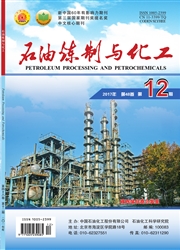

 中文摘要:
中文摘要:
硫组分的含量是表征燃料油品质的重要指标。采用遗传算法一多元线性回归法(GA—MLR)、BP神经网络法、列文伯格一马夸尔特人工神经网络算法(L—MANN)对52种有机硫化物在4种不同极性固定相上的气相色谱保留指数分别进行了定量结构一气相色谱保留关系研究。采用GAMLR方法选取模型的输入参数,并将筛选得到的描述符:一阶分子连接性指数(^1Х)、二阶分子连接性指数(^2Х)、电子能(EE)、Y轴偶极(Dy)用于BP神经网络、L—MANN人工神经网络定量结构保留(QsRR)模型的构建。结果表明:3种方法所建立的定量模型均具有较强的稳定性和良好的预测能力,其相关系数均在0.98以上,但L-MANN模型的预测结果稍好于其它2种方法;L—MANN算法首次被应用于燃料油中有机硫化物定量结构-气相色谱保留关系的研究中,效果十分理想,表明I,MANN算法可以作为一种替代性的建模方法用于物质的定量结构保留关系的研究中。
 英文摘要:
英文摘要:
Sulfur content is indispensable to evaluate the quality of fuel oil. Quantitative Structure Retention Relationship(QSRR)studies were performed for predicting the gas chromatographic retention times of 52 organic sulfur compounds in fuel oil on four different GC columns. The input parameters were selected by Genetic algorithm and multiple linear regression(GA-MLR)method. The final selected parameters including molecular connectivity indexes 1Z and 2~, electron energy(EE)and Y dipole(Dy) were then used as inputs of Error-back Propagation Network(BP)and levenberg-marquardt artificial neu- ral network(L-M ANN). The three QSRR models all have strong stability and good predictive ability,all of the correlation coefficients based on above methods are higher than 0.98. The predictive ability of L-M ANN model is superior to other two models and indicates that L-M ANN can be used as an alternative modeling tool for QSRR studies.
 同期刊论文项目
同期刊论文项目
 同项目期刊论文
同项目期刊论文
 期刊信息
期刊信息
